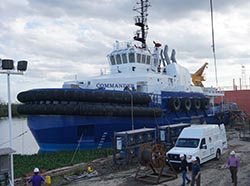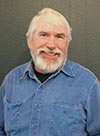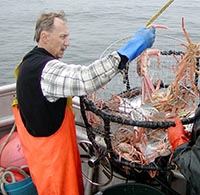Major equipment upgrades include state-of-the-art tugs, skimmers, oil-spotting technology, oil response barges

The first new Edison Chouest Offshore, or ECO, tugs to arrive in Prince William Sound are expected to be the Elrington, one of the new general purpose tugs, and the Commander, one of the new tanker escort tugs. They both launched last fall and are traveling north from the Gulf of Mexico, expected to arrive in early March. They will pick up a new, purpose-built oil spill response barge on their way past Portland, Oregon.
Update: The first tugs have arrived!
ECO is bringing a total of five new escort tugs, four new general purpose tugs, one utility and anchor handling tug, and four response barges to Alaska. As vessels and barges arrive in Prince William Sound, hands-on training and demonstrations with this equipment will start.

